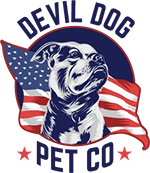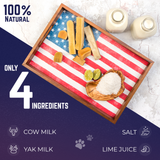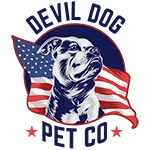Walk into any pet store, and you'll spot them on the shelves-those brown, twisted chews that dogs go absolutely crazy for. Bully sticks are 100% beef pizzle (bull penis) that's been cleaned, stretched, and slow-baked into a single-ingredient, protein-rich chew. They're not just another treat; they're a tool for mental stimulation, dental health, and behavioral management that's been winning over dog owners for decades.
Key Takeaways
- Bully sticks are made from 100% beef pizzle that is cleaned, stretched, and slow-baked.
- They serve as a protein-rich, single-ingredient chew for dogs.
- Bully sticks provide mental stimulation and support dental health.
- They can help with behavioral management in dogs.
- These chews have been popular with dog owners for decades.
Table of Contents
- What Makes Bully Sticks Special
- The Nutritional Powerhouse Behind the Chew
- Dental Health Benefits: Nature's Toothbrush
- Behavioral and Mental Health Impact
- Safety Profile: Understanding the Risks
- How to Choose, Use, and Store Bully Sticks Properly
- Serving Guidelines: Frequency and Portion Control
- The Bottom Line: Are Bully Sticks Worth It?
Here's the straight truth: our dog Dexter turned us into believers. When we first brought him home, he had enough energy to power a small city and jaws that could demolish furniture. Standard rawhides left him frustrated, and synthetic chews barely lasted an hour. Then we discovered quality bully sticks-game changer.
Quick Answer
Yes, bully sticks are excellent for dogs when chosen and used correctly. They're fully digestible, high in protein, low in fat, and provide significant dental benefits through natural chewing action. Unlike rawhide or synthetic alternatives, quality bully sticks break down safely in your dog's digestive system while satisfying their instinctual need to chew. The key is proper sizing, supervision, and moderation-typically 2-3 times per week as part of a balanced treat rotation.
But like any chew, bully sticks aren't a set-it-and-forget-it solution. Size matters. Quality matters. Supervision matters. Get these fundamentals right, and you've got a powerful tool for keeping your dog mentally stimulated, dentally healthy, and behaviorally satisfied.
What Makes Bully Sticks Special
Let's cut through the marketing fluff and talk facts. Bully sticks are made from a single ingredient: beef pizzle. That's bull penis, cleaned and dehydrated until it becomes a dense, chewy stick that dogs find irresistible. No fillers, no artificial flavors, no chemical preservatives-just pure beef protein.
The manufacturing process matters more than most owners realize. Quality producers source from grass-fed cattle, then clean and slow-bake the pizzles for 20+ hours until moisture drops below 10%. This extended drying creates the perfect texture-firm enough to provide lasting chew time, yet digestible enough to break down safely if swallowed.
Key Fact: A standard 6-inch bully stick contains approximately 88 calories and 15 grams of protein, making it a nutrient-dense reward that supports muscle development and overall health.
Compare this to rawhide, which undergoes chemical processing and can sit in your dog's stomach for hours without breaking down. Or synthetic chews that offer zero nutritional value while potentially containing harmful additives. Bully sticks deliver both entertainment and nutrition in one natural package.
The texture is what hooks dogs initially-that satisfying resistance that gives way slowly as they gnaw. But the benefits run deeper. Each chewing session exercises jaw muscles, scrapes away plaque buildup, and provides mental stimulation that can prevent destructive behaviors.
The Nutritional Powerhouse Behind the Chew

Here's where bully sticks separate themselves from the treat pack. They're not empty calories disguised as entertainment-they're legitimate nutrition wrapped in a chewable format.
The protein profile is impressive: bully sticks contain all essential amino acids your dog needs for muscle maintenance, immune function, and tissue repair. Unlike plant-based proteins that may lack certain amino acids, beef pizzle delivers complete protein that your dog's body can use immediately.
Fat content stays remarkably low-typically around 3%-making bully sticks suitable even for dogs managing weight issues. This lean profile means you can offer them regularly without throwing off your dog's caloric balance, assuming you adjust portions accordingly.
Nutritional Pros
- Complete protein source with all essential amino acids
- Low fat content (approximately 3%) supports weight management
- Rich in natural minerals like zinc and iron
- No artificial additives or preservatives in quality sticks
- Easily digestible compared to rawhide alternatives
Nutritional Considerations
- Calorie-dense (88 calories per standard stick) requires portion control
- High protein may cause digestive upset if introduced too quickly
- Not suitable for dogs with beef allergies or sensitivities
- Should count toward daily treat allowance (10% of total calories)
The digestibility factor cannot be overstated. When your dog gnaws off pieces of a quality bully stick, those bits dissolve in stomach acid like any other meat protein. This eliminates the blockage risk associated with rawhide, which can form gel-like masses that resist digestion.
Based on our experience and veterinary guidance, most adult dogs can safely enjoy a standard bully stick 2-3 times per week without disrupting their nutritional balance. Puppies and seniors may need modified portions, but the core nutritional benefits remain consistent across life stages.
Dental Health Benefits: Nature's Toothbrush
Bully sticks function as mechanical plaque scrapers, working overtime to keep your dog's teeth cleaner with every gnaw. The fibrous texture naturally frays as dogs chew, creating tiny bristles that reach between teeth and along the gumline-areas where plaque loves to hide.
Here's what happens during a typical 20-minute bully stick session: Your dog's chewing motion generates saliva, which helps neutralize harmful bacteria. The stick's resistance forces them to work different jaw angles, exercising muscles while the abrasive action scrubs away soft plaque before it hardens into tartar.
Veterinary Insight: Dogs that chew appropriately textured treats like bully sticks show 60-70% less plaque accumulation compared to dogs without regular chewing opportunities, according to veterinary dental studies.
The key difference between bully sticks and harder alternatives like antlers comes down to gentleness. While antlers can stress teeth with their extreme hardness, bully sticks provide firm resistance that gives way gradually. This makes them suitable for senior dogs with worn teeth or puppies still developing their adult chompers.
Unlike dental chews loaded with artificial ingredients, bully sticks clean teeth through pure mechanical action. No chemicals, no additives-just the natural scrubbing power of controlled chewing. The protein-rich composition also means any small pieces your dog swallows contribute to nutrition rather than just passing through empty.
For maximum dental benefit, timing matters. Offer bully sticks between meals when your dog's mouth isn't competing with food particles. The extended chewing session-typically 15-30 minutes for a standard stick-provides sustained cleaning action that quick treats simply can't match.
Behavioral and Mental Health Impact

Every dog owner knows the destruction an under-stimulated pup can unleash. Bully sticks address this by satisfying your dog's instinctual need to chew while providing crucial mental engagement that prevents problematic behaviors.
The psychological benefits start with stress relief. Extended chewing triggers endorphin release-nature's feel-good chemicals that promote calm, focused behavior. This makes bully sticks particularly valuable during high-anxiety periods like thunderstorms, fireworks, or when introducing new routines.
For puppies experiencing teething discomfort, bully sticks offer targeted relief. The controlled resistance provides counter-pressure against sore gums while teaching appropriate chewing habits early. Instead of your shoes becoming teething toys, puppies learn that certain items deliver the satisfaction they crave.
Behavioral Pros
- Reduces destructive chewing by redirecting natural instincts
- Provides 15-45 minutes of focused mental stimulation
- Releases calming endorphins during extended chew sessions
- Teaches impulse control and patience through delayed gratification
- Offers comfort during stressful situations or environmental changes
Behavioral Considerations
- May increase resource guarding in dogs with possession issues
- Can become overstimulating if introduced too quickly
- Requires supervision to prevent gulping or aggressive consumption
- May not satisfy dogs who prefer interactive or puzzle-based enrichment
The mental workout aspect cannot be understated. A dog working through a bully stick engages problem-solving skills, practices patience, and experiences the satisfaction of sustained effort paying off. This type of enrichment often results in a naturally tired, content dog-the kind that settles peacefully instead of seeking attention through unwanted behaviors.
For multi-dog households, bully sticks can serve as valuable training tools. Teaching dogs to chew calmly in their designated spaces while others wait their turn builds impulse control and reduces competition-based anxiety. However, always supervise multiple dogs with high-value chews to prevent resource guarding.
Based on our experience with Dexter and feedback from countless Devil Dog families, dogs that receive appropriate chewing outlets like bully sticks show marked improvement in overall behavior. Less furniture destruction, reduced attention-seeking barking, and better settling behaviors-all from meeting a fundamental biological need through proper channels.
Safety Profile: Understanding the Risks
Let's address the elephant in the room: no chew is 100% risk-free, and bully sticks require the same supervision and common sense as any other high-value treat. The difference lies in understanding and managing these risks rather than avoiding them entirely.
The primary concern involves choking hazards, particularly with the final nub that remains after extended chewing. Dogs may attempt to swallow pieces too large for safe passage, creating potential blockages. This risk is easily managed through proper sizing-choose sticks longer than your dog's muzzle-and removing the final 2-3 inches before it becomes swallowable.
Caloric density presents another consideration. A standard 6-inch bully stick contains roughly 88 calories, while jumbo varieties can exceed 200 calories. For a 30-pound dog requiring 900 daily calories, a single jumbo stick represents nearly 25% of their daily intake. Factor this into meal planning to prevent weight gain.
Safety Protocol: Remove bully sticks when they're small enough to fit entirely in your dog's mouth. For most dogs, this means retiring the chew when it reaches 2-3 inches in length.
Bacterial contamination, while rare with quality products, remains possible. Reputable manufacturers like Devil Dog Pet Co. source from USDA-inspected facilities and conduct additional testing, but proper storage matters too. Keep unused sticks in cool, dry conditions and discard any that develop unusual odors or visible mold.
Digestive upset can occur, particularly when introducing bully sticks to sensitive dogs or offering too much too quickly. Rich protein content may cause loose stools initially. Start with shorter chew sessions and gradually increase duration as your dog's system adapts.
For dogs with beef allergies or sensitivities, bully sticks are obviously off-limits. Alternative chews like elk antlers or yak cheese provide similar benefits without triggering allergic reactions. Always consult your veterinarian if you're unsure about food sensitivities.
How to Choose, Use, and Store Bully Sticks Properly

The right bully stick selection and handling practices determine whether your dog gets maximum benefit or faces unnecessary risks. Like any tool in your leadership arsenal, success depends on matching the product to your dog's specific needs and following proven protocols.
Size selection is your first line of defense against choking hazards. Choose sticks longer than your dog's muzzle and thick enough that they can't fit between the back molars. A 60-pound German Shepherd needs a jumbo 12-inch stick, while a 15-pound Terrier does well with a standard 6-inch option. When in doubt, size up-bigger lasts longer and stays safer.
Thickness matters as much as length. Aggressive chewers who demolish standard sticks in minutes should graduate to braided varieties, which weave three pizzles together for extended durability. Light chewers or seniors might prefer thinner options that require less jaw pressure.
Quality Indicators
- Single-ingredient label with no additives or preservatives
- Consistent color and texture without soft spots
- Minimal odor from proper dehydration
- USDA-inspected facility sourcing
- Appropriate firmness-yields to pressure but doesn't crumble
Red Flags to Avoid
- Strong ammonia or chemical odors
- Artificial colors, flavors, or preservative additives
- Extremely cheap pricing that suggests poor sourcing
- Soft, spongy texture indicating improper processing
- Visible mold, dark spots, or unusual discoloration
Storage protocols extend shelf life and maintain safety. Unopened sticks stay fresh for up to 36 months in cool, dry conditions. Once your dog starts chewing, allow the stick to air-dry completely between sessions-this prevents bacterial growth and maintains the firm texture that makes chewing challenging.
Supervision remains non-negotiable, especially during initial sessions. Watch your dog's chewing style: side-gnawers typically handle bully sticks well, while dogs who bite straight down may need softer alternatives. Remove the stick when it reaches 2-3 inches or becomes small enough to swallow whole.
Timing your bully stick sessions maximizes both safety and benefit. Offer them between meals when your dog is alert but not ravenous-hungry dogs tend to gulp rather than chew methodically. A 15-20 minute session provides substantial mental stimulation without overwhelming the digestive system.
For households with multiple dogs, establish clear protocols. Distribute sticks in separate areas to prevent resource guarding, and ensure each dog receives an appropriately sized portion. Never leave multiple dogs unsupervised with high-value chews-even the most peaceful pack can develop competition issues.
Serving Guidelines: Frequency and Portion Control
The question isn't whether bully sticks are good for dogs-it's how to incorporate them responsibly into your dog's routine. Proper serving guidelines prevent overfeeding while maximizing the behavioral and dental benefits that make bully sticks valuable leadership tools.
The 10% treat rule provides your foundation: all treats combined, including bully sticks, should comprise no more than 10% of your dog's daily caloric intake. For a 50-pound active dog requiring 1,200 calories daily, that's 120 calories maximum from treats. A standard 6-inch bully stick at 88 calories fits comfortably within this allowance.
Frequency recommendations vary by dog size and activity level. Most dogs thrive on 2-3 bully sticks per week, spread across different days to maintain novelty and prevent digestive upset. Power chewers who finish sticks quickly might handle daily sessions, while light chewers should stick to every other day.
Calorie Guide: Standard 6-inch stick = ~88 calories; Jumbo 12-inch stick = ~210 calories. Adjust meal portions accordingly or choose smaller sizes for frequent chewers.
Puppies require special consideration. Once adult teeth emerge (around 4-6 months), standard bully sticks provide excellent teething relief. Limit initial sessions to 10-15 minutes and monitor for digestive sensitivity. The rich protein can overwhelm young systems if introduced too aggressively.
Senior dogs benefit from modified approaches. Choose standard-thickness sticks over jumbo varieties to reduce jaw strain, and consider shorter sessions if arthritis affects chewing stamina. The protein boost supports muscle maintenance while the mental stimulation combats cognitive decline.
Monitor your dog's response during the first week of introduction. Loose stools indicate too much too fast-reduce frequency or session length until their system adapts. Most dogs adjust within 3-5 days, after which you can gradually increase to your target schedule.
Integration with training amplifies benefits. Use bully sticks as high-value rewards for challenging behaviors like "place" training or crate conditioning. The extended chewing period reinforces positive associations with specific locations or situations.
Seasonal adjustments make sense for many households. Increase frequency during stressful periods like holiday gatherings or moving, when dogs need extra calming support. Reduce during hot weather when dogs naturally eat less and may struggle with rich treats.
The Bottom Line: Are Bully Sticks Worth It?
Yes, bully sticks are excellent for dogs when chosen correctly, sized appropriately, and offered under proper supervision. They deliver genuine benefits-dental health improvement, behavioral enrichment, and nutritional value-that cheaper alternatives simply cannot match.
The key lies in treating them as tools rather than just treats. A well-selected bully stick becomes part of your leadership strategy, providing controlled challenge and satisfaction that prevents problematic behaviors before they start. Dogs that receive appropriate chewing outlets show better impulse control, reduced anxiety, and stronger bonds with their owners.
Quality matters more than price. Premium bully sticks from reputable sources like Devil Dog Pet Co. undergo rigorous testing and processing that eliminates most safety concerns while preserving maximum nutritional value. The investment pays dividends in longer-lasting chews, reduced veterinary issues, and peace of mind.
Remember the fundamentals: size up for safety, supervise consistently, and integrate into a balanced treat rotation. Bully sticks work best alongside other enrichment options-elk antlers for marathon chewers, yak chews for variety, and interactive toys for mental stimulation.
Most importantly, bully sticks support the Extreme Dog Leadership philosophy that every dog deserves clear guidance and appropriate outlets for natural behaviors. When you provide structured chewing opportunities, you're not just preventing destruction-you're building the foundation for a confident, well-adjusted companion.
The dogs in our Devil Dog community consistently show that proper chew management translates to better overall behavior. Fewer shelter surrenders, stronger human-dog bonds, and healthier, happier lives-that's the real measure of whether any product is "good for dogs." For more on this topic, see bully sticks for dogs: are they safe.
Your dog's success starts with your commitment to meeting their needs proactively. Bully sticks, chosen and managed correctly, represent one proven way to do exactly that. Lead with intention, supervise with care, and watch your dog thrive. For further reading, check out this external resource on bully sticks and their safety profile.
Download the FREE 10-Step Dog Prep Guide
Frequently Asked Questions
Do vets recommend bully sticks for dogs?
Many veterinarians recommend bully sticks as a safe, fully digestible chew option that supports dental health by mechanically scraping plaque and tartar. Their single-ingredient composition and low risk of splintering make them a solid choice when given under supervision and in appropriate sizes.
What is the downside of bully sticks?
The main downsides include their relatively high calorie content, risk of choking on small end pieces, and the potential for loose stools if consumed in excess due to rich protein. They also tend to have a natural odor that some owners find unpleasant.
Why do some vets not like bully sticks?
Some veterinarians caution against bully sticks because overconsumption can cause gastrointestinal upset or contribute to obesity if not balanced with diet. Additionally, without supervision, dogs may swallow large chunks, risking choking or digestive blockage.
Is it okay to give my dog a bully stick every day?
Daily bully sticks can be safe if portioned correctly within the 10% daily treat calorie guideline and paired with a balanced diet. However, monitoring your dog’s weight and stool consistency is essential, and rotating chew types can prevent dietary monotony and digestive issues.
Why can't dogs eat bully sticks?
Dogs can eat bully sticks safely, but issues arise when the chew is too small, causing choking hazards, or when dogs consume them excessively, leading to digestive upset. Proper sizing, supervision, and moderation are key to safe enjoyment.
What is the healthiest chew for dogs?
The healthiest chews are those that are fully digestible, single-ingredient, appropriately sized, and promote dental health without additives. Options like high-quality bully sticks, sustainably sourced antlers, and yak chews provide nutrient-dense, long-lasting enrichment when paired with responsible leadership and supervision.






